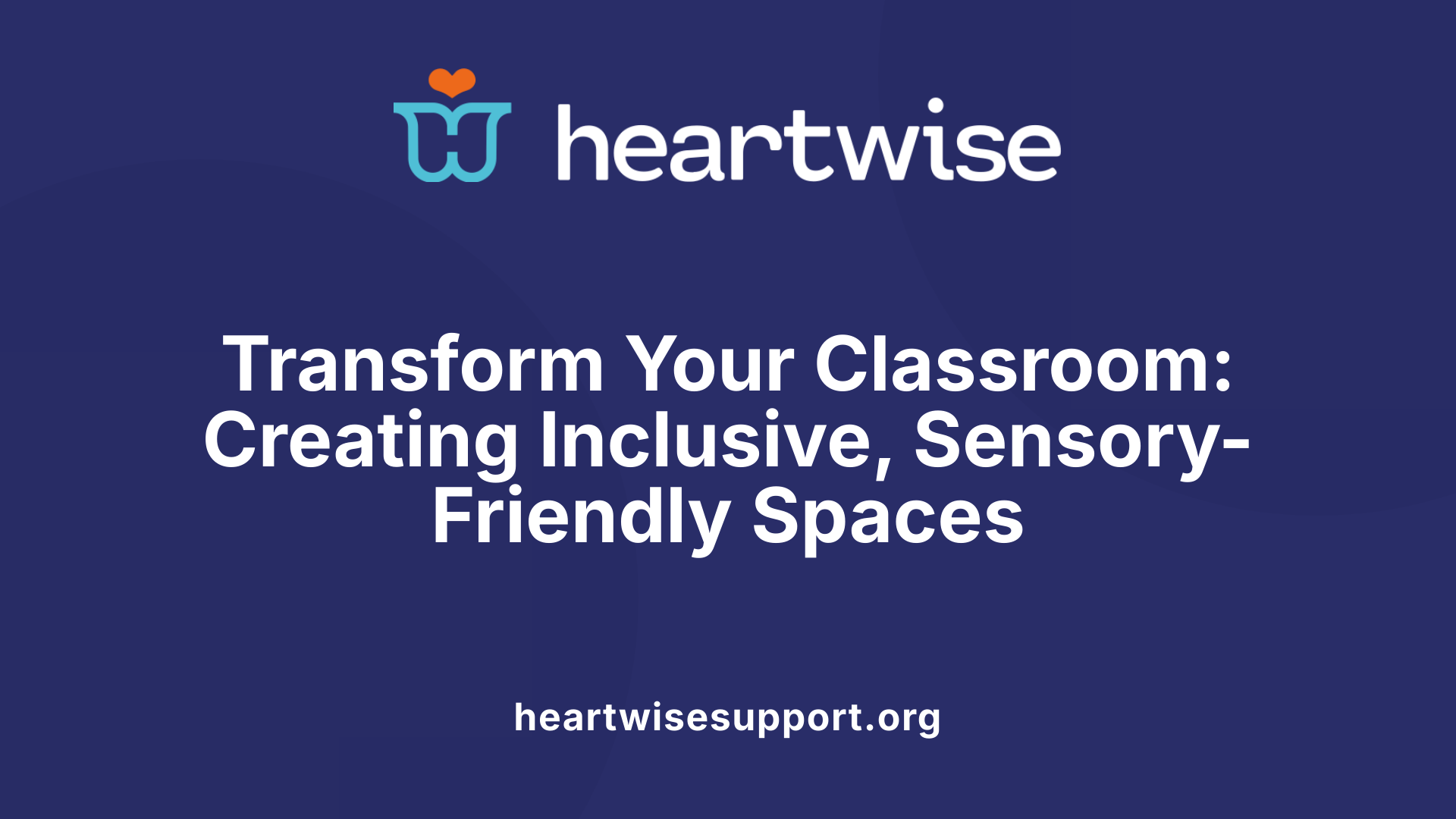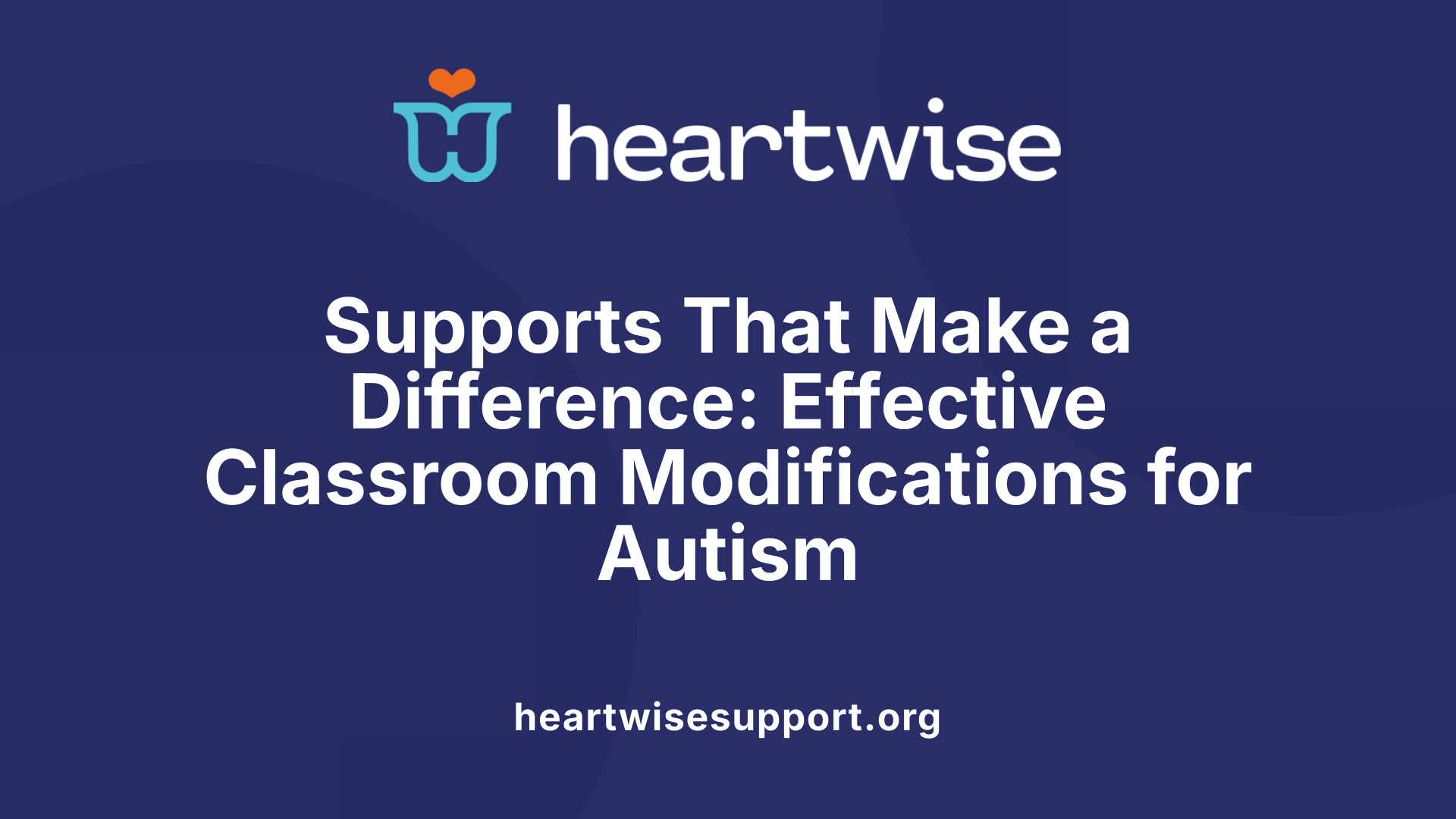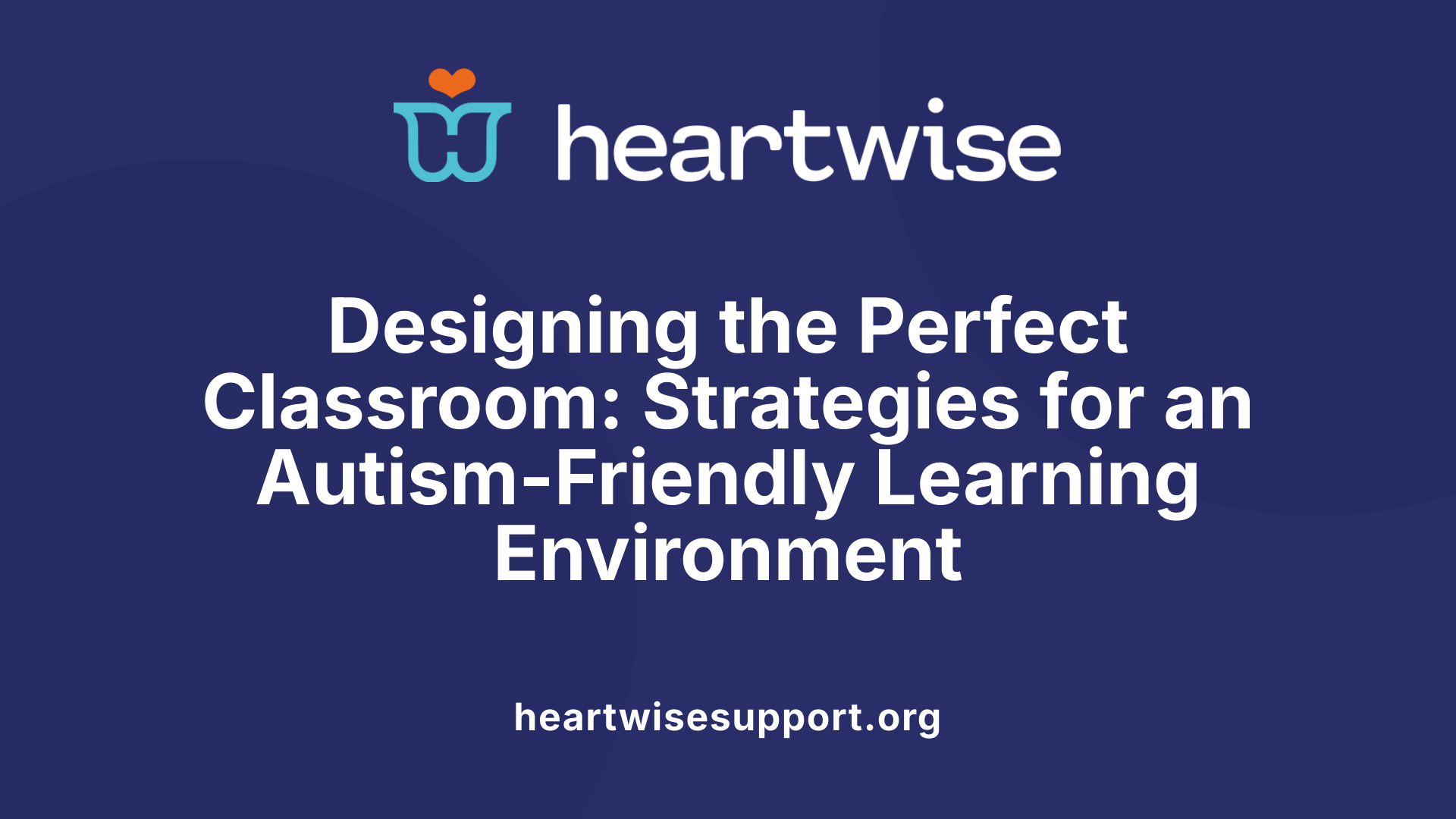Why Inclusive Environments Matter
Creating environments that support children with autism is essential for nurturing their social, emotional, and academic development. Inclusive settings not only accommodate individual sensory and communication needs but also promote understanding and acceptance among all children. This comprehensive approach benefits the entire community, fostering empathy, diversity, and resilience while ensuring equitable access to learning and participation.
Designing Sensory-Responsive Classrooms
How can educators create an autism-friendly environment?
Creating a classroom that supports children with autism involves careful planning to manage sensory sensitivities. One important aspect is reducing sensory overload by using soft, adjustable lighting, minimizing loud noises, and organizing the space in a clear, predictable manner.
Incorporating visual supports like schedules, social stories, and visual cues helps children understand routines and expectations, offering a sense of security. These tools can include picture charts or simple symbols that guide daily activities and transitions.
Designating sensory zones such as calm corners or sensory rooms allows children to retreat and self-regulate when feeling overwhelmed. These spaces might include soft seating, textured toys, weighted blankets, or calming lighting—creating a comforting environment tailored to individual needs.
Personalizing environments based on each child's sensory preferences can boost comfort and participation. Using simple, low-cost items like DIY sensory bins, scented objects, or adjustable lighting setups can make meaningful differences.
In addition, movement-based activities, such as bouncing or rocking, provide vestibular input that can soothe and energize children. Recognizing each child's unique sensory profile and incorporating appropriate tools and strategies helps foster engagement, calmness, and overall well-being.
Employing these approaches ensures classrooms are inclusive, responsive, and nurturing for children on the autism spectrum, promoting their academic and social success.
Implementing Evidence-Based Teaching Strategies
Supporting children with autism in educational settings requires the use of proven strategies that address their unique learning needs. Visual supports are particularly effective; tools such as visual schedules, choice boards, and social stories help children anticipate routines, understand expectations, and reduce anxiety.
Breaking down tasks into smaller, manageable steps using clear and simple language facilitates comprehension and independence. This approach ensures children can follow instructions without feeling overwhelmed.
Positive reinforcement techniques are essential for encouraging desired behaviors. Incorporating principles from Applied Behavior Analysis (ABA), such as providing praise or rewards, can motivate children and reinforce their progress.
To accommodate sensory sensitivities, classrooms should include sensory tools like noise-canceling headphones, fidget toys, and weighted blankets. Adjusting activities and providing sensory breaks support self-regulation and focus.
Supporting social skills development involves structuring opportunities for peer interactions and cooperative activities. These foster social understanding and inclusive friendships.
Overall, personalized plans like Individualized Education Programs (IEPs), structured teaching models such as TEACCH, and continuous professional development for educators are vital. These strategies create a consistent, supportive environment where children with autism can thrive academically, socially, and emotionally.
| Strategy | Purpose | Implementation Tips |
|---|---|---|
| Visual supports | Reduce anxiety, improve understanding | Use images, charts, social stories |
| Step-by-step instructions | Enhance task completion and independence | Clear language, sequential steps |
| Reinforcement and ABA techniques | Increase positive behaviors and motivation | Use praise, token systems, consistent routines |
| Sensory tools and modifications | Manage sensory overload and promote focus | Noise-canceling headphones, sensory breaks |
| Peer interactions and social groups | Foster social skills and inclusion | Buddy systems, group activities |
Creating inclusive, adaptable classrooms ensures children with autism receive the support they need for holistic development.
Adapting Physical Spaces for Inclusion

How can environments be adjusted to promote inclusion for children with autism?
Creating welcoming and accessible environments is essential for fostering inclusion of children with autism in classroom settings. Adjustments to physical spaces, such as classroom arrangement, lighting, and acoustics, play a crucial role.
Classroom layouts should prioritize easy navigation and safe pathways, with clutter minimized to reduce sensory overload. Flexible seating options—such as beanbags, cushions, standing desks, and chairs of various sizes—allow children to choose positions that suit their sensory needs. For example, some children may benefit from quiet, dimly lit corners or sensory-friendly zones where they can self-regulate.
Lighting adjustments are also important. Using natural light or dimmable lights can make the environment more comfortable, especially since fluorescent lighting can be uncomfortable for some students. Controlling noise levels—via sound-absorbing materials or designated quiet areas—helps reduce auditory sensory overload.
Designing outdoor spaces that are accessible and safe encourages physical activity and social interaction. These areas should include sensory-friendly equipment and calm zones, supporting children who might get overwhelmed indoors.
The use of assistive and augmentative communication devices further enhances inclusivity. Tools like speech-generating devices, visual supports, and digital communication apps enable children with limited speech to participate actively. Integrating these strategies aligns with Universal Design for Learning principles, ensuring that learning environments meet diverse needs.
Ultimately, the goal is to create spaces that are not only physically accessible but also sensory-friendly and psychologically safe, where every child feels comfortable, valued, and capable of engaging fully.
Classroom Modifications for Enhanced Support

What modifications can be made in classrooms to support students with autism?
Creating an inclusive and sensory-friendly classroom environment is essential to support children with autism. One of the fundamental modifications is to design sensory spaces within the classroom, such as quiet areas equipped with calming tools like noise-canceling headphones, weighted blankets, or soft lighting. These spaces provide students with opportunities to self-regulate and reduce sensory overload.
Visual supports are highly effective. Visual timetables and social stories help children understand daily routines and specific social expectations, easing transitions and reducing anxiety. These tools can include picture schedules, social scripts, and visual cues for classroom rules.
Assistive technology also plays a crucial role. Devices such as Augmentative and Alternative Communication (AAC) tools, speech-generating devices, or tablets with specialized apps facilitate communication for nonverbal or minimally verbal students, fostering independence and social interaction.
Implementing structured routines with predictable schedules ensures consistency and comfort. Visual and verbal cues about upcoming activities prepare students for changes, helping them manage transitions smoothly.
Physical classroom modifications include flexible seating options like beanbag chairs, standing desks, or cushions, accommodating sensory preferences and comfort. Adjustments to lighting, such as using natural light or dimming fluorescents, and controlling noise levels through acoustic panels or background white noise, contribute to a sensory-friendly environment.
To maximize engagement, teachers should tailor activities to students’ interests and strengths, integrate social skills through structured group activities, and utilize visual supports and cues. Collaboration with specialists, occupational therapists, and families is critical for developing personalized strategies.
Providing regular, ongoing staff training on autism awareness and sensory strategies ensures consistent implementation of modifications. Schools should also support developmentally appropriate behavior plans and individualized education programs (IEPs) to meet each child’s unique needs.
In summary, effective classroom modifications include sensory spaces, visual aids, assistive technologies, routine predictability, flexible seating, and sensory adjustments—all aimed at creating an environment conducive to learning, social participation, and emotional well-being for children with autism.
Behavioral Strategies to Promote Positive Outcomes
What are effective behavioral strategies for children with autism?
Effective behavioral approaches for children with autism focus on creating a supportive and structured environment. Using positive reinforcement to reward desired behaviors encourages children to repeat those actions. Incorporating naturalistic teaching methods—learning through everyday activities—can make skill acquisition more meaningful.
Visual cues play a vital role, such as visual schedules, timers, and social stories. These tools help children anticipate what will happen next, reducing anxiety and promoting understanding.
Listening to and respecting each child's unique communication style—whether verbal or non-verbal—builds trust and addresses their individual needs. Clear, simple instructions combined with offering choices within set boundaries foster cooperation and reduce frustration.
Teaching emotional regulation skills, like recognizing feelings and using calming strategies, supports self-control. Encouraging self-advocacy helps children understand their needs, empowering them to communicate effectively.
Managing transitions smoothly is another important strategy. Using visual cues and advanced warning helps children prepare for changes in routines, minimizing stress.
Structured peer activities, such as group work and buddy systems, promote social skills and inclusion. Tailoring these strategies to each child's strengths and preferences creates a more positive and engaging learning environment.
Overall, consistency, patience, and individualization are essential. Combining these approaches can significantly enhance social participation, independence, and overall well-being of children with autism.
Creating the Ideal Learning Environment

What is the ideal learning environment for a child with autism?
The best learning spaces for children with autism are designed to be structured, predictable, and sensory-friendly. These environments use consistent routines and visual supports such as schedules, social stories, and visual cues to help children understand daily activities and transitions confidently. Such visual aids reduce anxiety and promote independence.
Minimizing distractions is also vital. This can be achieved through organized classrooms, noise control, and thoughtful lighting, along with creating quiet, calming areas where children can self-regulate emotions and decompress if overwhelmed.
Communication within the classroom should be tailored to each child's needs, utilizing multimodal methods like PECS, sign language, or assistive technology for effective interaction and participation. Incorporating positive reinforcement strategies encourages engagement and skill development.
Creating an inclusive environment that supports individual needs while facilitating peer interactions is crucial. Evidence-based models, such as TEACCH or Structured Teaching, help organize routines and physical spaces to foster social skills and independence.
On a broader scale, an optimal learning environment prioritizes the child's safety, emotional comfort, and opportunities for growth. It combines physical comfort with emotional security, empowering children with autism to succeed academically, socially, and emotionally.
Advancing Toward Truly Inclusive Education
Creating truly inclusive environments for children with autism involves a holistic approach that integrates sensory responsiveness, evidence-based instructional strategies, physical space adaptations, and a supportive community ethos. Emphasizing routine, predictability, personalized supports, and social inclusion helps children build confidence, skills, and friendships. Continuous professional development, active parent and community engagement, and a committed school leadership are vital to maintaining and improving these environments. As awareness grows and best practices are implemented, educational spaces will become more welcoming and effective for all children, reflecting the fundamental human right to inclusive and equitable education.
References
- Creating Inclusive Environments for Children with Autism - IntechOpen
- Effective Classroom Strategies for Teaching Students with Autism
- Inclusion: Ensuring Access for Everyone - Autism Speaks
- 11 Ways to Build an Autism-Inclusive Classroom
- Educational Support for individuals with Autism: Creating Inclusive ...
- Inclusivity for children with autism spectrum disorders: Parents ...
- Ten Tips for Creating Autism and ADHD Inclusive Classrooms
- Supporting Sensory Diversity: Building Inclusive Classrooms











